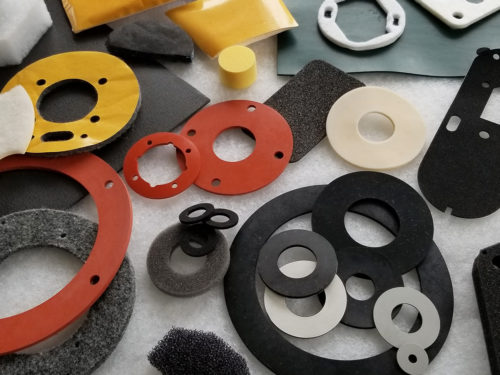
We are able to cut parts up to 80” x 60” from all types of elastomeric and nonwoven sheet or roll stock. And, we are able to respond quickly to customer development and production requirements by building most dies in-house using customer AutoCAD files or recreating from customer supplied dimensional drawings.
